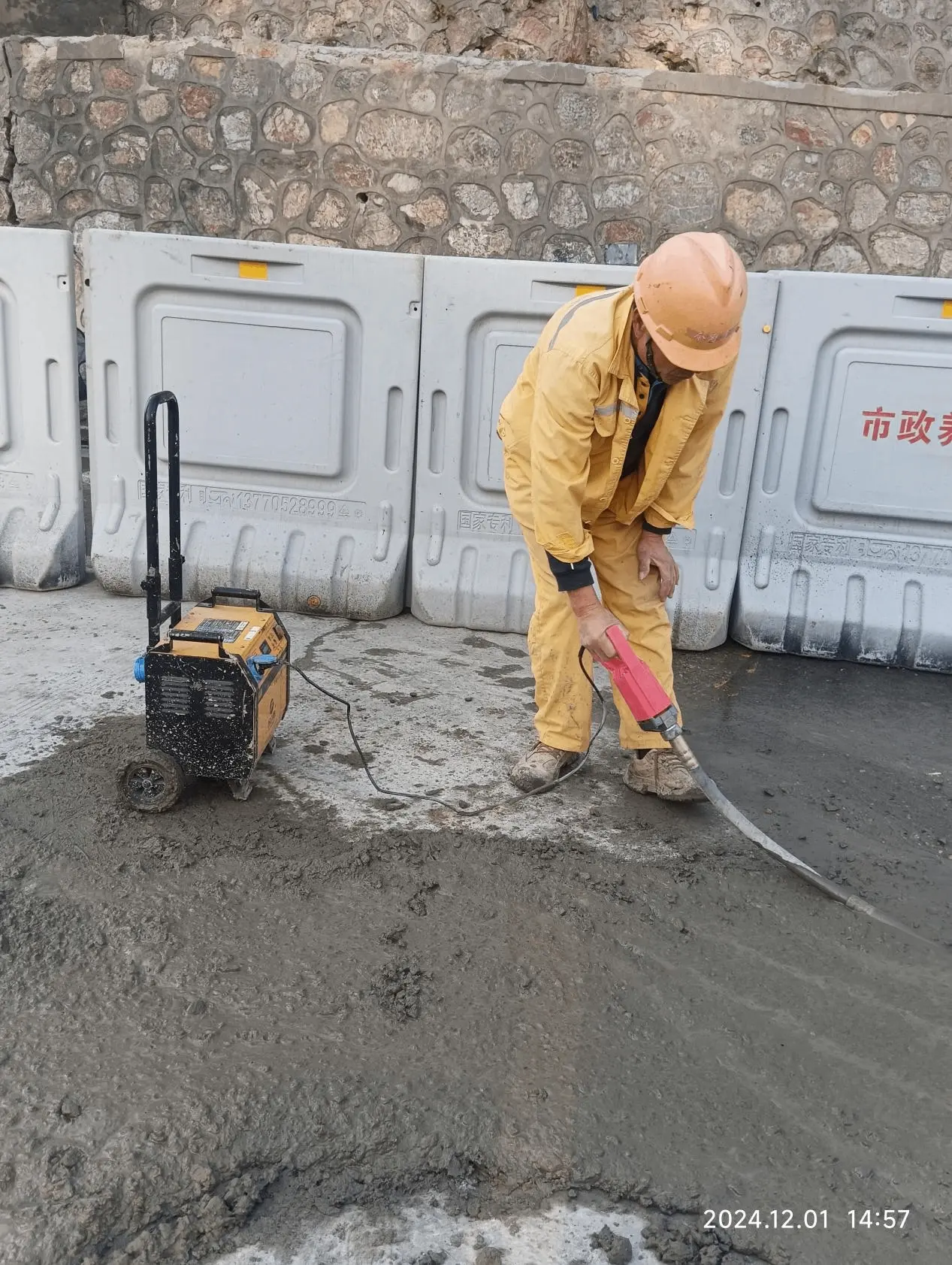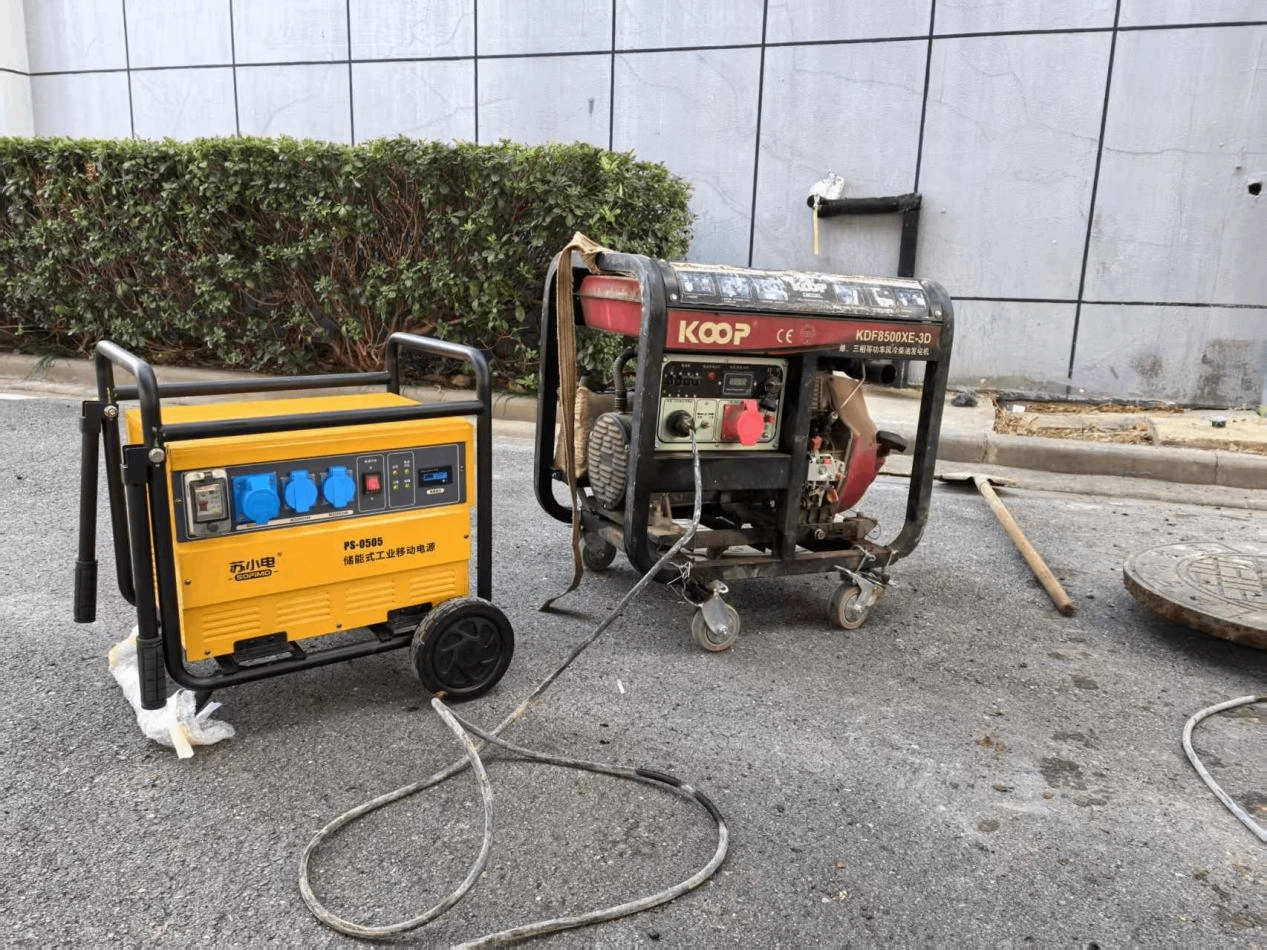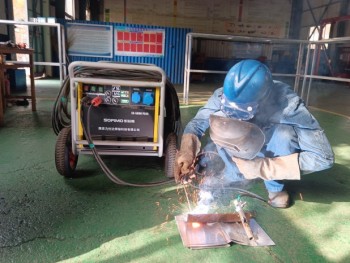燃料費や環境への影響を心配されていますか?従来の発電機は燃料を大量に消費し、汚染を引き起こします。ポータブル発電所には、よりクリーンでスマートな方法があると私は信じています。
私の経験では、これらのステーションはエネルギーの無駄を省き、直接燃料を燃やさないことで環境を保護している。クリーンで、太陽光のような再生可能エネルギーによる充電が可能で、効率的に電力を蓄えることができる。
バッテリー駆動へのシフトは、携帯性だけではない大きなメリットをもたらす。しかし、具体的にどのようにして省エネや環境面でのメリットを実現しているのだろうか?燃料消費量、環境に優しい機能、二酸化炭素排出量、エネルギー貯蔵の役割について詳しく見てみよう。
どのように 建設用ポータブル発電所 発電機と比べて燃料消費は減るのか?
燃料缶を運んだり、うるさくて臭い発電機と付き合ったりするのにうんざりしていませんか?燃料が常に必要なため、コストと手間がかかり、作業が中断され、流出の危険性があることは承知しています。
私は、彼らがいかに燃料を節約しているかを目の当たりにしてきた。 燃やす 運転中、燃料は一切不要。蓄えた電気で動くので、ガソリンやディーゼルを現地で使う必要がなく、経費と手間を節約できる。
産業用ポータブル発電所が燃料消費を削減する最も直接的な方法は、内燃機関をバッテリー・システムに置き換えることである。従来の発電機は、化石燃料(ガソリンやディーゼル)を燃焼させてオルタネーターを回転させ、電気を発生させます。ポータブルパワーステーションは、この燃焼ステップを完全に省略します。
ポイント・オブ・ユース燃料の廃止
これが核心的な違いである。発電機の運転時間は、タンクにどれだけの燃料があり、負荷がかかったときにどれだけの速さで燃料を消費するかに直接結びつきます。そのためには
燃料の購入:価格が変動する継続的な運営費。
燃料の輸送:適切な容器、車両、および安全上の注意が必要である。
燃料の保管:火災の危険性があり、漏出や流出による環境破壊の可能性もある。
現場での給油:作業を中断し、こぼれたりヒュームにさらされたりする危険性がある。
ポータブルパワーステーションは、これらの要件をすべて解消する。コンセントからの電気やソーラーパネルなどの再生可能エネルギーで充電する。一度充電されれば、現場での燃料を必要とせずに電力を供給することができます。これは、燃料の輸送が困難な遠隔地や、流出すると悲惨なことになる環境的に敏感な地域でのプロジェクトに特に有益です。
オーバーヘッドの削減
燃料そのもののコストだけでなく、燃料ロジスティクスを管理することで、運営上大きなオーバーヘッドが発生する。スタッフの時間を考えてみよう:
ガソリンスタンドに行く。
燃料缶の安全な充填と運搬。
現場での給油作業。
燃料記録と在庫の管理
電気式ポータブル・パワー・ステーションに切り替えることで、資源が節約され、日常業務が簡素化される。充電は、一晩中コンセントに差し込むか、日中ソーラーパネルに接続するだけで済むことが多い。
燃料面に焦点を当てた基本的な比較だ:
| 特徴 | 伝統的な発電機 | 産業用ポータブル発電所 | 燃料消費恩恵(ステーション) |
| エネルギー源 | ガソリン / ディーゼル | 蓄電 | 現場での燃料が不要 |
| 燃料は必要か? | あり(一定) | いいえ(充電ソースのみ) | 燃料の取り扱い/保管が不要 |
| 事業所内排出 | あり(排気ガス) | いいえ | よりクリーンな空気、より安全な運転 |
| 給油の必要性 | 頻繁、手動 | 定期的な充電 | 中断が少なく、プロセスがシンプル |
| 燃料物流 | 購入、輸送、保管が必要 | なし(現地運営のため) | 運用コストとリスクの削減 |
充電に使用される電気はどこかで発電されなければならないが(燃料が必要な場合もある)、充電に使用される電気は、どこかで発電されなければならない。 ポイントオブユース 消費はゼロである。このように影響が局所化されることで、大気質、騒音、現場の安全性の面で即座にメリットが得られる。さらに、バッテリーに蓄積された電力を使用可能な電力に変換する効率は、一般的に発電機の小型内燃機関の熱効率よりも高く、グリッドから充電する場合でも、全体として無駄なエネルギーが少ないことを意味する。購買マネージャーにとって、これはランニングコストの削減、運用の複雑さの軽減、燃料の取り扱いに関連する安全リスクの軽減に直結する。
ポータブル発電所の特徴 建築用 環境に優しい代替案?
発電機からの騒音や煙が気になりますか?騒音に関する苦情や空気の質に関する心配は、特に人口の多い地域や敏感な環境ではよくあることです。
排気ガスも一酸化炭素も発生しないので、本質的に環境に優しいと思う。さらに、静かに作動し、太陽光発電のようなクリーンエネルギーで充電できるため、まさに環境に優しい電源なのだ。
単に燃料消費を削減するだけでなく、いくつかの重要な特徴により、産業用ポータブル発電所は、従来の燃焼式発電機と比較して、基本的に環境に優しい選択肢となっています。これらの要素は、よりきれいな空気、より静かな地域社会、化石燃料への依存度の低減に貢献します。
地域の大気・騒音汚染ゼロ
これは環境的にも社会的にも大きなメリットである。
大気の質:発電機は、一酸化炭素(CO)、窒素酸化物(NOx)、粒子状物質(PM2.5)、未燃炭化水素など、有害な汚染物質を周囲の空気に直接放出する。これらはスモッグや呼吸器系の問題、環境破壊の原因となる。ポータブル発電所はバッテリー駆動のため、運転中にこれらの汚染物質を放出することはない。これは作業員の健康、特に狭い場所での作業や、公共施設、学校、病院の近くでの使用にとって極めて重要である。
騒音公害:発電機の騒音は有名で、しばしば70~80デシベルを超える。このレベルの騒音は、住宅地や公園、自然環境を破壊し、作業員のストレスや聴覚疲労の原因となります。ポータブルパワーステーションは、ほとんど無音で作動するため、騒音に敏感な場所や夜間の作業に最適です。
再生可能エネルギーとの統合
この機能により、環境に優しい製品であることが証明された。標準的な電力網から充電することもできるが、ポータブルパワーステーションはソーラーパネルとの組み合わせに最適だ。
ソーラー充電:多くの産業用ステーションにはMPPT(最大電力点追従)チャージコントローラーが内蔵されており、ポータブルまたは固定式のソーラーパネルから直接エネルギーを効率的に取り込むことができます。これにより、完全に自己完結型のオフグリッド電力システムが構築され、運転中の環境への影響は実質的にゼロです。太陽光だけで工具や現場設備を動かすことを想像してみてください。
系統充電のタイミング:グリッドから充電する場合でも、ユーザーはオフピークの時間帯を選べることが多い。電力網は、このような時間帯により高い割合の再生可能電源やより効率的なベースライン発電所を利用することがあり、充電に関連する全体的な二酸化炭素排出量を削減できる可能性がある。
有害廃棄物およびメンテナンスへの影響の削減
発電所の運転ライフサイクルは、一般的に発電機よりもクリーンである。
オイル交換不要:発電機は定期的なオイル交換を必要とし、使用済みオイルは有害廃棄物として適切な処理が必要となる。発電所ではエンジンオイルを使用しない。
消耗部品が少ない:発電機には、定期的な交換が必要なスパークプラグ、エアフィルター、燃料フィルターがあり、廃棄物の原因となる。バッテリー・システムは、可動部品や消耗品がはるかに少ない。バッテリーは最終的に劣化しますが、リチウムイオンバッテリーのリサイクルプログラムは普及しつつあり、使用後の環境への影響を軽減しています。
これらの要因が相まって、ポータブルパワーステーションは、環境フットプリントを削減し、より厳しい環境規制を遵守し、企業の社会的責任プロファイルを向上させることを目指す組織にとって、説得力のある選択肢となっている。
可能 建設用ポータブル発電所 炭素排出量の削減に貢献するか?
御社のカーボンフットプリントの削減は優先事項ですか?現在、多くの企業が排出量を追跡していることは知っていますが、発電機のような化石燃料を使用する機器に頼ることは、直接的に問題に拍車をかけています。
もちろん、そうだ。ガソリンやディーゼルの直接燃焼をなくすことで、二酸化炭素排出量に最も大きな影響を与える。太陽光発電のような再生可能エネルギーで充電すれば、稼働時の二酸化炭素排出量はゼロに近くなり、プロジェクトの排出量を大幅に削減できる。
二酸化炭素(CO2)の排出は気候変動の主な要因であり、その削減は世界的な環境目標である。産業用ポータブル発電所は、一時的な電力需要に伴うCO2排出量を削減する上で、従来の発電機よりも大きな利点を提供します。
ユースポイントでの直接排出削減
最も明らかな貢献は、運転中の直接的なCO2排出をなくすことである。1ガロンのガソリンを燃焼させると約19.6ポンド(8.9kg)のCO2が発生し、1ガロンのディーゼルを燃焼させると約22.4ポンド(10.2kg)のCO2が発生する。発電機が何時間も稼働していると、相当量のCO2が現場の大気中に直接放出されることになる。
発電機:燃料を燃やす→CO2+その他の汚染物質を放出する。
ポータブル発電所:バッテリーを放電→現地でゼロエミッションを放出。
発電所を発電機に置き換えるだけで、現場での直接的な炭素排出を即座に削減できる。これは明確で測定可能な環境上のメリットである。
よりクリーンなエネルギー・グリッドの活用
送電網から充電する場合でも、ポータブル発電ステーションは、発電機を稼働させる場合に比べて、全体的な二酸化炭素排出量が少なくなることが多い。これは、地域の送電網のエネルギー構成による:
送電網のエネルギーミックス:多くの送電網では、再生可能エネルギー(太陽光、風力、水力)や低炭素の天然ガスの導入が進んでおり、電力の平均炭素集約度(1キロワット時あたりに排出されるCO2)を削減している。
発電機の非効率:ポータブル発電機の小型内燃エンジンは、送電網に電力を供給する大規模発電所と比べて、燃料エネルギーを電気に変換する効率が低いことが多い。これは、発電所が比較的クリーンな送電網から取り込むのと同じ量の使用可能な電力を生産するために、発電機がより多くの燃料を燃やす(そしてより多くのCO2を排出する)可能性があることを意味する。
再生可能な充電:専用のソーラーパネルを使って充電すれば、運用時の二酸化炭素排出量は実質ゼロになる。CO2削減の可能性が最も高い。
10kWhの電力を発電する場合の潜在的な二酸化炭素排出量を単純化して比較してみよう:
| 電源シナリオ | 推定CO2排出量(概算) | キーファクター |
| ガソリン発電機(標準的な効率) | 15~25ポンド(7~11 kg)CO2 | 直接燃料燃焼 |
| ディーゼル発電機(標準効率) | 18~28ポンド(8~13kg) CO2排出量 | 直接燃料燃焼 |
| 発電所(米国の電力網から充電) | 8~10ポンド(3.5~4.5キログラム)の二酸化炭素 | グリッド炭素強度 |
| 発電所(低炭素グリッドから充電) | 2~5ポンド(1~2.5 kg)CO2 | グリッドミックスにおける自然エネルギー/原子力の高い% |
| 発電所(ソーラーパネルから充電) | ~0ポンドCO2 | 再生可能エネルギー |
注:これらは例示的な推定値であり、実際の値は発電機の効率、特定のグリッドミックス、その他の要因によって異なる。
持続可能性の目標を掲げている企業や、排ガス規制の下で操業している企業にとって、ポータブルパワーステーションへの切り替えは、操業時の二酸化炭素排出量を削減する具体的な方法となる。これは、報告、コンプライアンス、環境責任を証明するための貴重なポイントとなり、購買マネージャーは考慮する必要があります。
効率的なエネルギー貯蔵はどのように環境目標を助けるのか?
再生可能エネルギーについてはよく耳にするが、太陽が照っていないときはどうなるのだろうか?私は、クリーンなエネルギーを効果的に貯蔵することが、それを実際に安定的に使用し、化石燃料への依存を減らす鍵であると認識している。
私の考えでは、これらのステーションは小型のモバイルバッテリーのようなものだ。日中の太陽光発電のようなクリーンなエネルギーを取り込み、それを後で使用することで、需要の多い時間帯に汚れた「ピーカー」発電所の必要性を減らすことができる。
産業用ポータブル発電所に代表される効率的なエネルギー貯蔵は、より広範な環境目標を達成する上で、特に再生可能エネルギー源への移行を促進し、既存の送電網インフラの利用を最適化する上で、極めて重要な役割を果たしている。
再生可能エネルギーの獲得
太陽光や風力のような再生可能エネルギー源は断続的で、太陽が照っているときや風が吹いているときにしか発電しない。エネルギー貯蔵は、以下の方法でこの問題を解決する:
余剰電力の貯蔵:ソーラーパネルが必要以上の電力を生産した場合(例:真昼の太陽)、接続されたポータブル発電所は、この余分なクリーンエネルギーを無駄にしたり、抑制を必要としたりするのではなく、貯蔵することができる。
後で電力を供給蓄積された太陽エネルギーは、需要のピーク時、夜間、または曇りの日に使用することができ、クリーンな電力を安定して供給することができる。
オフグリッドでの再生可能エネルギー利用を可能にする:遠隔地の場合、ソーラーパネルと発電所を組み合わせることで、化石燃料の必要性を完全に排除し、再生可能エネルギーのみで稼働する自給自足システムを構築できます。これは、環境監視ステーション、遠隔通信リレー、または公園施設に最適です。
断続的な自然エネルギーをオンデマンドで使用可能にすることで、エネルギー貯蔵はクリーンエネルギー技術の成長と採用を直接的に支援する。
グリッド・エネルギー利用の最適化(負荷シフト)
ポータブルパワーステーションは、既存の電力網からのエネルギー利用を最適化し、環境面でのメリットにもつながる:
オフピーク時の充電:電力需要は一日を通して変動する。電力会社は、ピーク時の高い需要を満たすために、効率が低く、汚染度の高い「ピーカー発電所」(通常は天然ガス)に頼ることが多い。ユーザーは、需要が少なく、送電網がよりクリーンで効率的なベースライン電源(風力、水力、原子力など、地域によって異なる)で稼働している可能性があるオフピーク時間帯(夜間など)に、発電所を充電することができる。
ピーク需要の削減:送電網から直接電力を供給する代わりに、ピーク時に発電所から蓄電されたエネルギーを使用することで、ユーザーは全体のピーク需要を削減することができる。これにより、電力会社は効率が低く、排出量の多いピーカー発電所を稼働させる必要性が減り、送電網全体の排出量削減につながる。
ここでは、効率的なストレージがどのように環境目標に貢献しているかを紹介する:
| ストレージ・ベネフィット | メカニズム | 環境面での成果 |
| 再生可能エネルギーの統合 | 断続的な太陽/風力エネルギーを貯蔵 | クリーンエネルギーの利用拡大 |
| オフグリッドの実現 | グリッド接続なしで自然エネルギーから信頼性の高い電力を供給 | 遠隔地における化石燃料の代替 |
| 荷重移動 | オフピーク時に充電、ピーク時に放電 | 非効率で汚染を引き起こすピーカープラントへの依存を減らす。 |
| グリッドの安定性 | グリッド・サポート・サービスを提供できる可能性がある(全体として) | 自然エネルギーに対応できる、より強靭な送電網を支える |
| 削減 | 無駄になる可能性のある再生可能エネルギー発電の余剰分を吸収する | 既存のクリーン・エネルギー・インフラの恩恵を最大限に活用する。 |
基本的に、ポータブル発電所は分散型エネルギー資源として機能する。エネルギーの使用方法と使用時間に柔軟性を与え、クリーンな資源の利用を拡大し、特にピーク時の発電に伴う環境への影響を軽減する。このようなエネルギー貯蔵の戦略的利用は、より持続可能なエネルギーの未来を築くための基本である。
つまり、産業用ポータブルパワーステーションは、省エネと環境配慮のための重要なツールです。燃料の使用を削減し、地域の排出を排除し、炭素排出量を低減し、重要な再生可能エネルギー源を効果的に統合するのに役立ちます。必要な場合は、バッテリ式溶接機の生産と配信で20年の経験を持つ私たちに今すぐご連絡ください。





